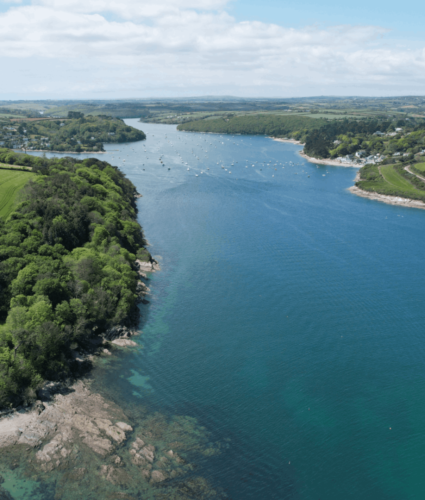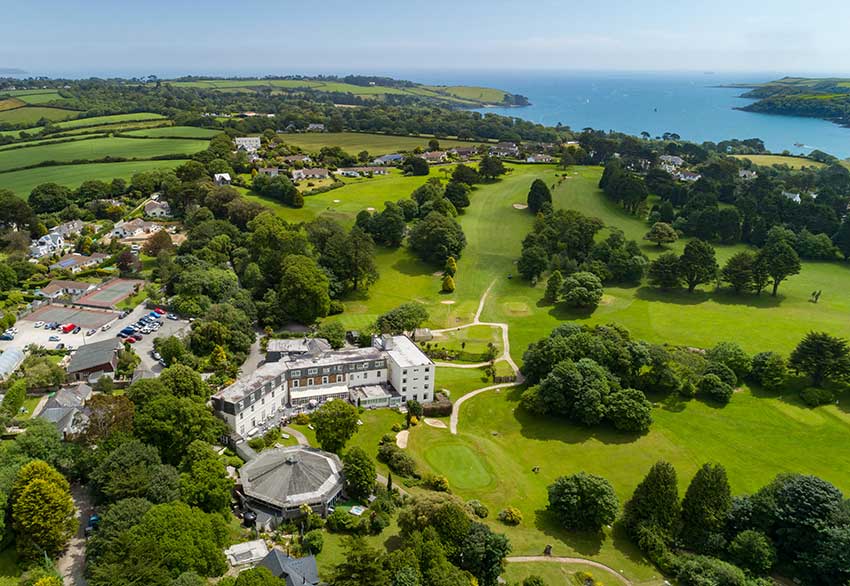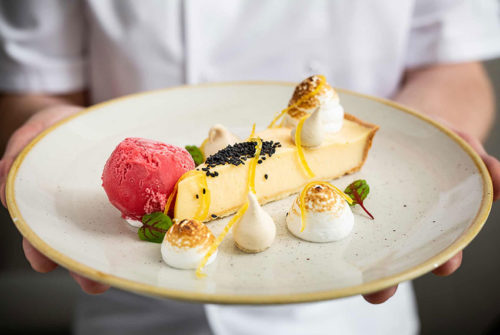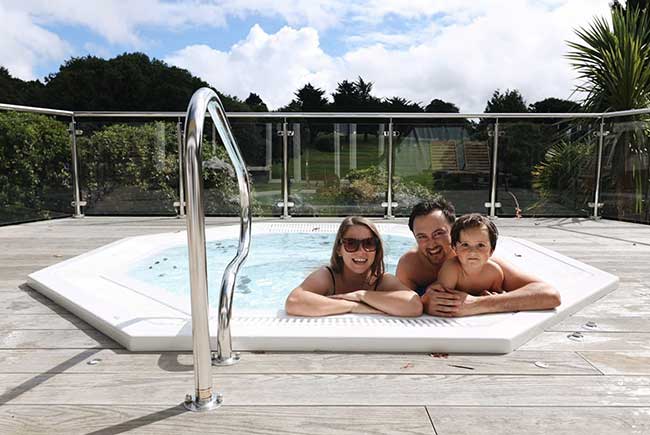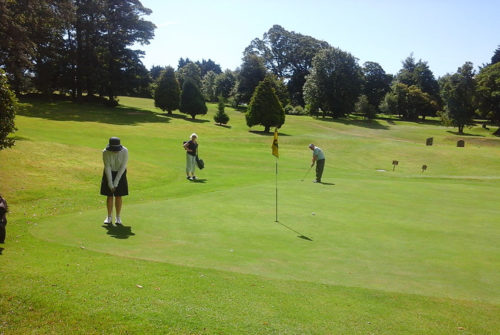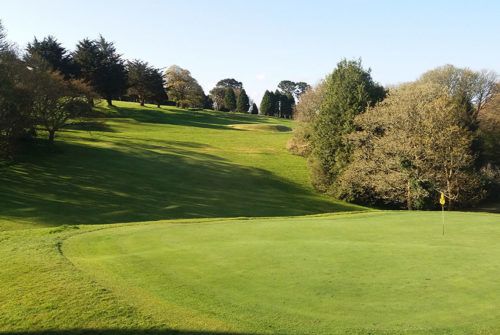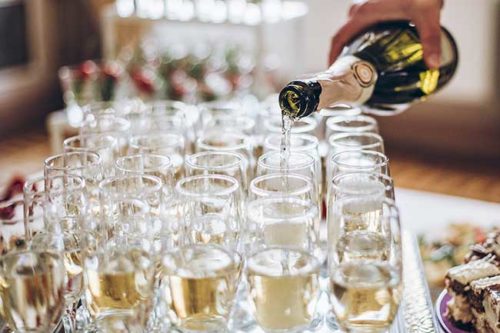News from Budock Vean
Pirates & Smugglers
The quiet creeks and wooded valleys of the Helford River are a haven for wildlife and a delight to explore but in the past they were used as a different kind of bolthole. In centuries past, when this now peaceful waterway bustled with trade and the unceasing coming and going of ships and fishing craft, pirates and smugglers were about their business too.
In the 17th century the river had a reputation for nefarious activities and in 1602 the Cornish antiquarian, Richard Carew, wrote that it was only used by “the worst sort of seafarers . . . pirates”, who ambushed ships entering the river or passing to close to its mouth. In 1624 a man called Diggory Priske was put on trial for trying to steal a ship called the Larke and the cargo of tin on-board, in order to sail it to “foreign shores”.
Carew suggested that the river should actually be known as “Stealford” because in his opinion, unfortified as it was, with no military presence, the illegal goings on “cannot be controlled”. And this state of affairs continued well in to the 19th century.
Many will be familiar with the stories of the pirates based at Prussia Cove, a little further down the coast on the Lizard. These tales may seem far-fetched but they are actually true. The Crater brothers, John and Harry, really did control the waters on this part of the Cornish coast for many years during the 18th century and early 19th century, running a highly lucrative smuggling enterprise and consistently outwitting, outmanoeuvring and outgunning the revenue men.
They sailed fast, heavily armed ships, readily attacking the authorities when threatened, employed bands of local men who were extremely loyal to their cause and built their own personal fiefdom at Prussia Cove, which has now become the stuff of legend. But what isn’t so well known is that the Carter’s had a strong connection with the Helford too.
It seems that Henry ‘Harry’ Carter, known as Captain Carter, often unloaded contraband at Helford village, right under the noses of the revenue men, as this newspaper report from the winter of 1785 illustrates.
“On Saturday the 18th instant, a large smuggling luggar mounted with upwards of 20 guns, commanded by a noted outlaw, appeared off Helford. Two revenue vessels were then at anchor in the harbour. The smugglers assembled on the shore and the Captain began to land his cargo, which was very valuable. On seeing this the revenue vessels (not daring to face this outlaw) manned their boats, well-armed and made towards the people employed in landing the goods, in hopes of seizing the boats coming on shore. This manoeuvre, being seen from the luggar, her boats instantly filled with desperadoes, who attacked the boats belonging to the revenue vessels, drove them off, mortally wounding some of the men, forcing others to jump into the sea and swim to shore. The smugglers loading the boats were then ordered back with the goods which were taken on board and the luggar stood out at sea, the Captain fearing the alarm might be given. He is hourly expected again on the coast. As nothing but a frigate dare come near him, he visits where he pleases with impunity.” – Reading Mercury, 3 January 1785.
Although Carter is not mentioned by name it is generally agreed it was him that the newspaper report refers too, especially as Harry was known to be courting a young lady from Helford at this time. He records in his autobiography, a unique document of its era published in 1894, that he married Elizabeth Flindel of Helford at Manaccan Church on 19th April 1786, which is confirmed by the parish registers.
It appears that after the wedding, probably due to Harry’s status as a pirate and an outlaw, Elizabeth continued to live with her mother at Helford. He notes in his diary that she gave birth to their first child, a daughter they named Alice after Elizabeth’s mother, in April 1787 but he wasn’t able to visit the child until the November when he arrived in “a luggar . . .mounting sixteen carriage guns.”
Elizabeth would visit Harry in hiding but was “always obliged to come and go at night” which he seems to have decided contributed to her subsequent ill health, which began in August 1788. She was nursed by her mother at Helford but by October it was clear she was dying of consumption and Carter sailed up the river to visit her one last time. He had decided he needed to leave Cornwall to avoid arrest and wrote:
“When I went to Helford to see her one night . . . I found her in a very weak state, and as I expected then soon to quit the country, I stayed with her about two or three hours, when we took our final farewells of each other, never expecting to see each other no more in time. Oh, what a trying scene it was, to leave her in flood of tears. So I arrived home to my dreary solitude a little before day [break].”
Elizabeth died a few days later and was buried at Manaccan church. Harry was heartbroken, writing that he was now “cut off from every comfort in this life”. He eventually retired from his career of piracy and smuggling, living the final years of his life quietly on a farm near Rinsey. The Helford River did not become a languid, law-abiding backwater however. Its roll in the criminal underworld of Cornwall was too well-established.
From medieval times until the 19th century Gweek, at the head of the Helford, was a busy port famous for the export of tin and although it did not have a castle like Falmouth or St Mawes it had been a base for his/her Majesty’s Customs for many years. The revenue men did their best to keep control of trade within the river but with so many secluded creeks and hidden beaches along the 27 miles of its foreshore they had their work cut out for them.
The newspaper reports of the time illustrate the cat and mouse games that were playing out on the river, reporting wins and losses for each side in turn with relish. On one occasion in 1807 an off-duty customs officer, hunting birds in the woods along the banks of the river near Gweek, literally stumbled upon a stash of 63 barrels of brandy while trying to flush out a pheasant. He must have felt particularly triumphant seizing this valuable haul without even having to fire a shot.
But even when the revenue men succeeded in confiscating contraband it often didn’t stay impounded for long. In December 1771 a warehouse belonging to the Gweek Customs officers was broken into in the dead of night. Nine casks of confiscated brandy were carried off and the Ipswich Journal reported that a pardon and a reward of £50 had been promised to any accomplice that would give up their fellow offenders.
Gweek customs house was broken into again in 1805 when a quantity of slate, on which duty hadn’t been paid, were stolen.
But the most notorious raid on a Custom’s House in Cornwall occurred in September 1840.
In early September a ship called the Teignmouth was seized by revenue officers, commanded by Lt. McLean, while anchored near the Manacles, not far from the entrance to Helford River. The crew, who had realised they had been spotted, escaped but the ship was brought into the safety of the river and searched. One hundred and thirty-three barrels of French brandy were found “slung over her stern”, concealed below the water on the outside of the ship, as well as a large sum of money.
The contraband was removed from the ship and locked up in “the Queen’s warehouse” near Helford village. However, according to the newspaper reports, at one o’clock in the morning 30 or 40 men broke into the custom’s house, forcing their way through several doors and waking the attendants who were sleeping upstairs. These poor folk were too frightened to raise the alarm and the smugglers took back their loot, carrying away all but three of the kegs on wagons. It was said they left the three barrels in sympathy for the revenue men.
The episode became one of the most notorious in Cornwall’s smuggling history, making the papers across the country.
Though piracy fizzled out smuggling continued in the Helford until the 1850s and the tales of these illegal escapades have lasted to the present day. It is little wonder then, with those all those stories in mind, the secluded atmosphere and timeless scenery that the writer Daphne du Maurier found inspiration from the place. She spent the night anchored on her yacht in Frenchmen’s Creek in 1932 and her novel about a pirate captain became one of her bestsellers and made the river infamous for nefarious goings-on once more.
So, should you find yourself on the banks of the Helford or paddling into some of its hidden corners it is worth remembering for a moment the other feet that have stood on these shores and the other vessels that have glided noiselessly into it creeks . . .
